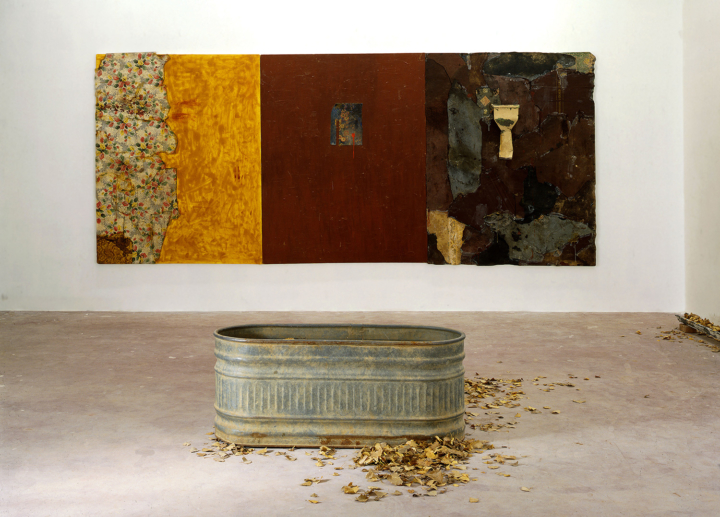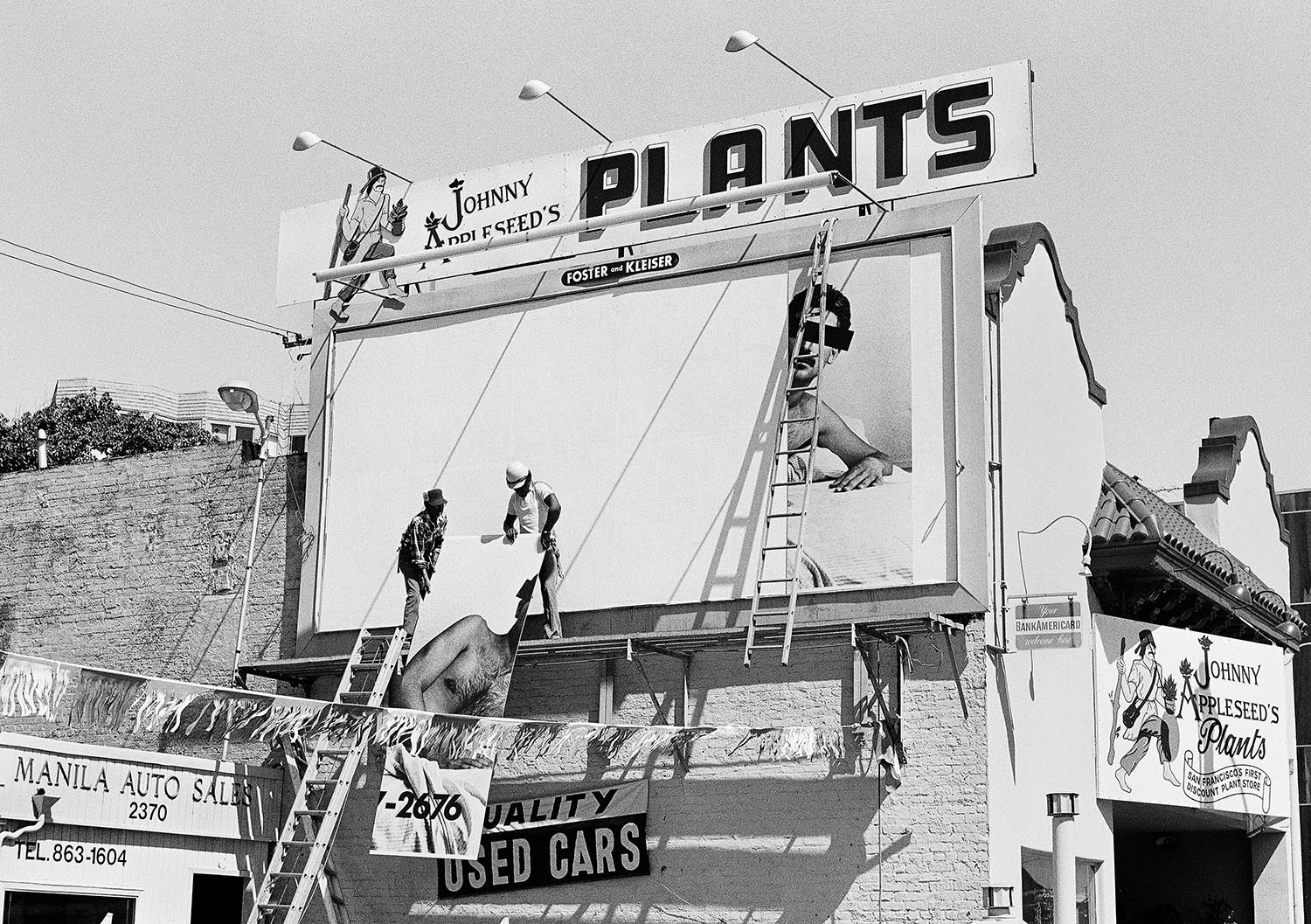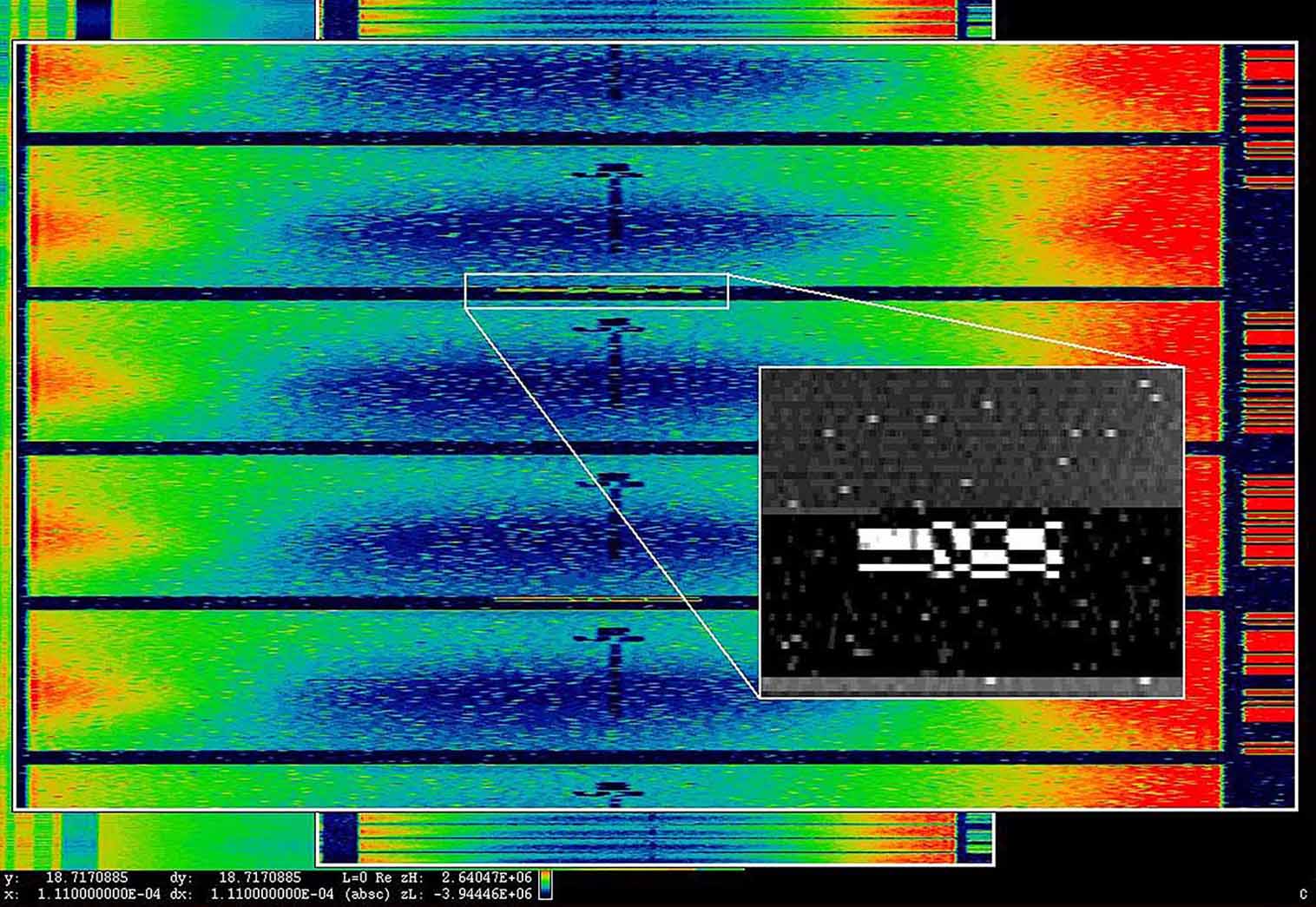John Everett Millais’s Autumn Leaves, displayed at the Royal Academy in 1856, was understood as a radical departure from normative modes of narrativity in Pre-Raphaelite art. No discernable story emerges. Instead, there is only the melancholic or joyful cascade of dying flora accompanied by young, rural girls, who are loosely engaged in the labor of burning leaves. Rather than adhering to the expectation for storytelling, Autumn Leaves appeals to light, color, and nostalgia. Leaves were for Millais and many other artists a way to mark time, to evoke a mood without resorting to obvious denotation, to remind us that spring will come again.
Perhaps the comparison to Harmony Hammond’s Inappropriate Longings (1992) is too obvious, but sometimes meanings line up so tidily as to be astonishing. Hammond’s assemblage of a trough full of fall leaves, a canvas marred with the words “Goddamn Dyke,” and an affixed storm drain could not be more different from Autumn Leaves. It would be easier to make the comparison to Meret Oppenheim, Eva Hesse, Ana Mendieta, or Sheila Pepe, or to wax eloquent about the debates surrounding the relationship between materialism and queer feminism. All of these connections would be true, but to trot them out again would be a critical and historiographic cliché.

© Harmony Hammond/Licensed by VAGA, New York
Instead, I suggest that leaves represent the necessary cyclicality of feminist history, or what historian Joan Scott has called the “fantasy echo” of feminist history. We speak of feminism as having waves, but why not seasons, spells of time that flow into each other unpredictably? Consider, for example, Hammond’s Small Erasures, in which letters from artists declining permission to use their work in Hammond’s landmark book Lesbian Art in America become memento mori, encased in amber. Small Erasures brings the continuing difficulties of lesbian feminism to mind, even as we might consider that tension to be long behind us. Or we might see Untitled (1995) with its beautifully vulvic slit as being evocative of a moment when feminist core imagery was key to changing the conversation around the apolitical masculinity of Minimalism.
This is not to say that any version of feminism is outdated — quite the opposite. What I mean to suggest is that feminism, especially queer feminism, carries with it remnants of everything that has come before, like the hot and humid days that might crop up in the crisp fall. Queer feminism is a cumulative effort that constantly returns to itself, touches itself, articulates itself.




